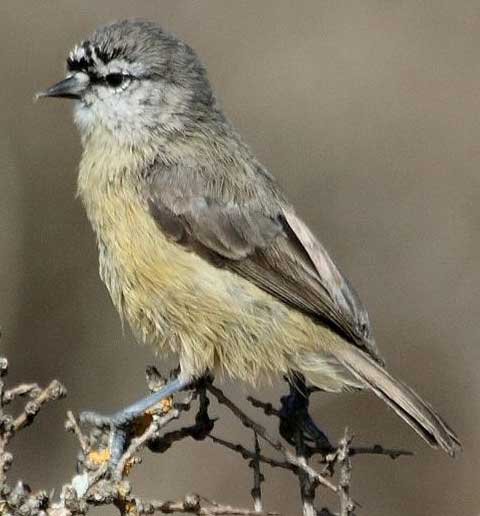
Anthoscopus minutus (*)
Superregnum: Eukaryota
Cladus: Unikonta
Cladus: Opisthokonta
Cladus: Holozoa
Regnum: Animalia
Subregnum: Eumetazoa
Cladus: Bilateria
Cladus: Nephrozoa
Superphylum: Deuterostomia
Phylum: Chordata
Subphylum: Vertebrata
Infraphylum: Gnathostomata
Megaclassis: Osteichthyes
Cladus: Sarcopterygii
Cladus: Rhipidistia
Cladus: Tetrapodomorpha
Cladus: Eotetrapodiformes
Cladus: Elpistostegalia
Superclassis: Tetrapoda
Cladus: Reptiliomorpha
Cladus: Amniota
Classis: Reptilia
Cladus: Eureptilia
Cladus: Romeriida
Subclassis: Diapsida
Cladus: Sauria
Infraclassis: Archosauromorpha
Cladus: Crurotarsi
Divisio: Archosauria
Cladus: Avemetatarsalia
Cladus: Ornithodira
Subtaxon: Dinosauromorpha
Cladus: Dinosauriformes
Cladus: Dracohors
Cladus: Dinosauria
Ordo: Saurischia
Cladus: Eusaurischia
Subordo: Theropoda
Cladus: Neotheropoda
Cladus: Averostra
Cladus: Tetanurae
Cladus: Avetheropoda
Cladus: Coelurosauria
Cladus: Tyrannoraptora
Cladus: Maniraptoromorpha
Cladus: Maniraptoriformes
Cladus: Maniraptora
Cladus: Pennaraptora
Cladus: Paraves
Cladus: Eumaniraptora
Cladus: Avialae
Infraclassis: Aves
Cladus: Euavialae
Cladus: Avebrevicauda
Cladus: Pygostylia
Cladus: Ornithothoraces
Cladus: Ornithuromorpha
Cladus: Carinatae
Parvclassis: Neornithes
Cohors: Neognathae
Cladus: Neoaves
Cladus: Telluraves
Cladus: Australaves
Ordo: Passeriformes
Subordo: Passeri
Infraordo: Passerida
Familia: Remizidae
Genus: Anthoscopus
Species: Anthoscopus minutus Subspecies: A. m. damarensis - A. m. gigi - A. m. minutus
Name
Anthoscopus minutus (Shaw, 1812)
References
The naturalists' miscellany 23 pl.997,text
Vernacular names
English: Southern Penduline-tit
español: Pájaro moscón de El Cabo
The Cape penduline tit or southern penduline tit (Anthoscopus minutus) is a species of bird in the family Remizidae. It is found in Angola, Botswana, Namibia, South Africa, and Zimbabwe. Its natural habitats are dry savannah, subtropical or tropical dry shrubland, and Mediterranean-type shrubby vegetation. At eight centimetres (3 in) in length, it is one of the smallest species of bird found in Africa, along with its cousins the grey penduline tit and the mouse-coloured penduline tit.[2][3]
Taxonomy
The Cape penduline tit was formally described and illustrated in 1812 by the English naturalist George Shaw under the binomial name Sylvia minuta.[4] The species is now placed in the genus Anthoscopus that was introduced in 1851 by the German ornithologist Jean Cabanis.[5][6] The genus name combines the Ancient Greek anthos meaning "blossom" or "flower" with skopos meaning "searcher". The specific epithet minutus is Latin meaning "little".[7]
Three subspecies are recognised:[6]
A. m. damarensis Reichenow, 1905 – west Angola and north Namibia, north, east Botswana, Zimbabwe and north South Africa
A. m. gigi Winterbottom, 1959 – south South Africa
A. m. minutus (Shaw, 1812) – west, south Namibia, southwest Botswana and west, central South Africa
Behaviour
Breeding
They build a globular nest made of the webs of Stegodyphus spiders as well as silken fibre from various plants. An entrance hole is made on the side and towards the end, a false entry and chamber are constructed below the actual entrance to the nest chamber. The spout at the entrance has a separating septum with the entrance to the actual nest chamber at the upper portion, the septum pushed up with its forehead to close the upper entrance by the bird just before leaving the nest so as to show only the main entrance leading into a blind chamber. This is a defence against snakes and other nest predators.[8][9]
References
BirdLife International (2016). "Anthoscopus minutus". IUCN Red List of Threatened Species. 2016: e.T22711679A94306171. doi:10.2305/IUCN.UK.2016-3.RLTS.T22711679A94306171.en. Retrieved 16 November 2021.
Sinclair, Ian (1995). Southern African Birds: A Photographic Guide. ISBN 9781770072442.
Field Guide to the Birds of East Africa: Kenya, Tanzania, Uganda, Rwanda, Burundi by Stevenson & Fanshawe. Elsevier Science (2001), ISBN 978-0856610790
Shaw, George (1812). The Naturalist's Miscellany (in Latin). Vol. 23. London: Printed for Nodder & Co. Plate 997.
Cabanis, Jean (1850–1851). Museum Heineanum : Verzeichniss der ornithologischen Sammlung des Oberamtmann Ferdinand Heine, auf Gut St. Burchard vor Halberstadt (in German and Latin). Vol. 1. Halberstadt: R. Frantz. p. 89.
Gill, Frank; Donsker, David; Rasmussen, Pamela, eds. (January 2022). "Waxwings and allies, tits, penduline tits". IOC World Bird List Version 12.1. International Ornithologists' Union. Retrieved 15 March 2022.
Jobling, James A. (2010). The Helm Dictionary of Scientific Bird Names. London: Christopher Helm. pp. 49, 256. ISBN 978-1-4081-2501-4.
Collias, Nicholas E.; Collias, Elsie C. (1984). "Predators and Nests". Nest Building and Bird Behavior. Nest Building and Bird Behavior. Princeton University Press. pp. 142–163. doi:10.1515/9781400853625.142. ISBN 978-1-4008-5362-5.
Skead, C. J. (1959). "A study of the Cape penduline tit Anthoscopus minutus minutus (Shaw and Nodder)". Ostrich. 30 (sup1): 274–288. doi:10.1080/00306525.1959.9633335. ISSN 0030-6525.
Retrieved from "http://en.wikipedia.org/"
All text is available under the terms of the GNU Free Documentation License

